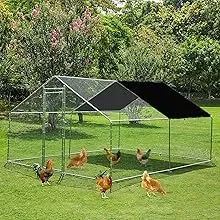-
 Afrikaans
Afrikaans -
 Albanian
Albanian -
 Amharic
Amharic -
 Arabic
Arabic -
 Armenian
Armenian -
 Azerbaijani
Azerbaijani -
 Basque
Basque -
 Belarusian
Belarusian -
 Bengali
Bengali -
 Bosnian
Bosnian -
 Bulgarian
Bulgarian -
 Catalan
Catalan -
 Cebuano
Cebuano -
 China
China -
 Corsican
Corsican -
 Croatian
Croatian -
 Czech
Czech -
 Danish
Danish -
 Dutch
Dutch -
 English
English -
 Esperanto
Esperanto -
 Estonian
Estonian -
 Finnish
Finnish -
 French
French -
 Frisian
Frisian -
 Galician
Galician -
 Georgian
Georgian -
 German
German -
 Greek
Greek -
 Gujarati
Gujarati -
 Haitian Creole
Haitian Creole -
 hausa
hausa -
 hawaiian
hawaiian -
 Hebrew
Hebrew -
 Hindi
Hindi -
 Miao
Miao -
 Hungarian
Hungarian -
 Icelandic
Icelandic -
 igbo
igbo -
 Indonesian
Indonesian -
 irish
irish -
 Italian
Italian -
 Japanese
Japanese -
 Javanese
Javanese -
 Kannada
Kannada -
 kazakh
kazakh -
 Khmer
Khmer -
 Rwandese
Rwandese -
 Korean
Korean -
 Kurdish
Kurdish -
 Kyrgyz
Kyrgyz -
 Lao
Lao -
 Latin
Latin -
 Latvian
Latvian -
 Lithuanian
Lithuanian -
 Luxembourgish
Luxembourgish -
 Macedonian
Macedonian -
 Malgashi
Malgashi -
 Malay
Malay -
 Malayalam
Malayalam -
 Maltese
Maltese -
 Maori
Maori -
 Marathi
Marathi -
 Mongolian
Mongolian -
 Myanmar
Myanmar -
 Nepali
Nepali -
 Norwegian
Norwegian -
 Norwegian
Norwegian -
 Occitan
Occitan -
 Pashto
Pashto -
 Persian
Persian -
 Polish
Polish -
 Portuguese
Portuguese -
 Punjabi
Punjabi -
 Romanian
Romanian -
 Russian
Russian -
 Samoan
Samoan -
 Scottish Gaelic
Scottish Gaelic -
 Serbian
Serbian -
 Sesotho
Sesotho -
 Shona
Shona -
 Sindhi
Sindhi -
 Sinhala
Sinhala -
 Slovak
Slovak -
 Slovenian
Slovenian -
 Somali
Somali -
 Spanish
Spanish -
 Sundanese
Sundanese -
 Swahili
Swahili -
 Swedish
Swedish -
 Tagalog
Tagalog -
 Tajik
Tajik -
 Tamil
Tamil -
 Tatar
Tatar -
 Telugu
Telugu -
 Thai
Thai -
 Turkish
Turkish -
 Turkmen
Turkmen -
 Ukrainian
Ukrainian -
 Urdu
Urdu -
 Uighur
Uighur -
 Uzbek
Uzbek -
 Vietnamese
Vietnamese -
 Welsh
Welsh -
 Bantu
Bantu -
 Yiddish
Yiddish -
 Yoruba
Yoruba -
 Zulu
Zulu
Innovative Solutions for Agricultural Shade Netting and Crop Protection Techniques
The Importance of Agricultural Shade Netting in Modern Farming
Agricultural shade netting has emerged as a crucial component in modern farming practices, fostering sustainable agriculture by enhancing crop yield and protecting plants from environmental stresses. This innovative technology plays a vital role in regulating light, temperature, and moisture, thereby creating an optimal growth environment for various crops.
Understanding Agricultural Shade Netting
Shade netting consists of woven fabrics made from high-density polyethylene (HDPE) and is available in various shade percentages. Typically, these nets can block between 10% to 90% of sunlight, allowing farmers to choose the appropriate level of shading based on the specific requirements of their crops. The primary objective of shade netting is to protect plants from excessive sunlight, wind, and precipitation, while still allowing sufficient light for photosynthesis.
Benefits of Using Shade Netting
1. Temperature Regulation One of the most significant advantages of shade netting is its ability to regulate temperatures within the growing area. By mitigating the impact of direct sunlight, shade nets can help maintain cooler temperatures, which is particularly beneficial for heat-sensitive crops such as lettuce, herbs, and other leafy greens. This temperature control can lead to better growth rates and improved quality of produce.
2. Moisture Conservation In many regions, excessive evaporation can lead to water scarcity during the critical growing season. Shade netting helps reduce evaporation rates from the soil, preserving soil moisture and ultimately reducing water usage. This aspect is particularly advantageous in arid and semi-arid regions where water is a limited resource.
3. Pest and Disease Control By creating a physical barrier, shade nets can help keep pests such as insects and birds at bay. This protective element reduces the need for chemical pesticides, promoting a more organic approach to farming. Furthermore, the nets can help reduce humidity levels, thereby minimizing the risk of fungal diseases that thrive in moist conditions.
agricultural shade netting

4. Enhanced Crop Quality and Yield Shielding crops from harsh weather conditions not only helps in achieving higher yields but also improves the overall quality of produce. Fruits and vegetables grown under shade nets often exhibit better color, texture, and taste, making them more appealing to consumers and increasing market value.
5. Versatility and Application Agricultural shade nets can be applied across various types of farming, whether it be open-field cultivation, nursery production, or greenhouse farming. They are particularly beneficial for high-value crops, floriculture, and even fruit orchards seeking to enhance production rates.
Implementing Shade Netting in Farming Practices
When integrating shade netting into farming operations, several factors should be considered. The choice of netting should be aligned with the specific crops grown, climate conditions, and local pest pressures. Additionally, proper installation and maintenance of shade nets are essential to maximize their longevity and effectiveness. Farmers should also be educated on the appropriate net shading percentages, as different crops have varying light requirements.
It is important to recognize that while shade netting provides numerous benefits, it should be seen as part of a comprehensive farming strategy. Combining shade netting with other sustainable practices, such as drip irrigation, organic fertilizers, and integrated pest management, can significantly enhance a farm's productivity and sustainability.
Conclusion
In conclusion, agricultural shade netting is an essential tool for modern farmers facing the challenges of climate variability and environmental sustainability. By regulating temperature, conserving moisture, controlling pests, and enhancing crop quality, shade netting facilitates improved agricultural outcomes. As the global demand for food increases, embracing technologies like shade netting will be critical in ensuring food security while promoting sustainable agricultural practices.
-
Shipping Plastic Bags for Every NeedNewsJul.24,2025
-
Safety Netting: Your Shield in ConstructionNewsJul.24,2025
-
Plastic Mesh Netting for Everyday UseNewsJul.24,2025
-
Nylon Netting for Every UseNewsJul.24,2025
-
Mesh Breeder Box for Fish TanksNewsJul.24,2025
-
Expanded Steel Mesh Offers Durable VersatilityNewsJul.24,2025











